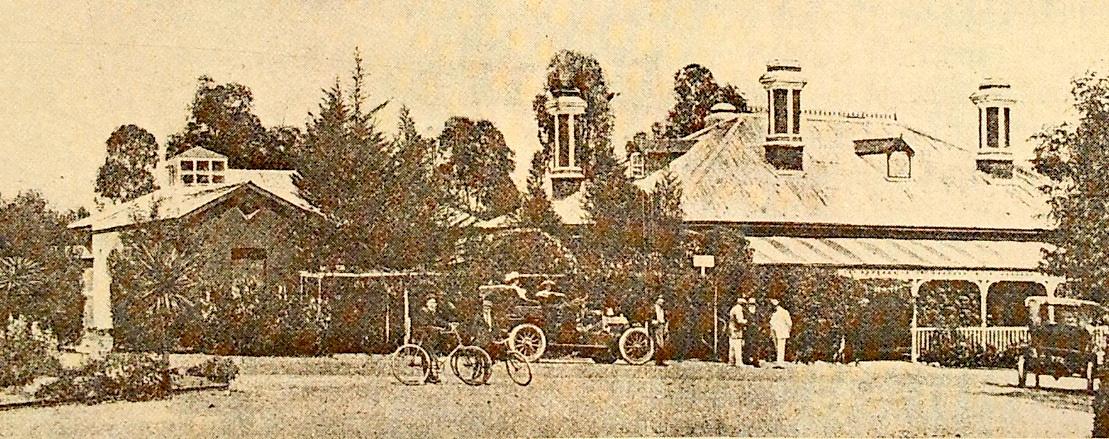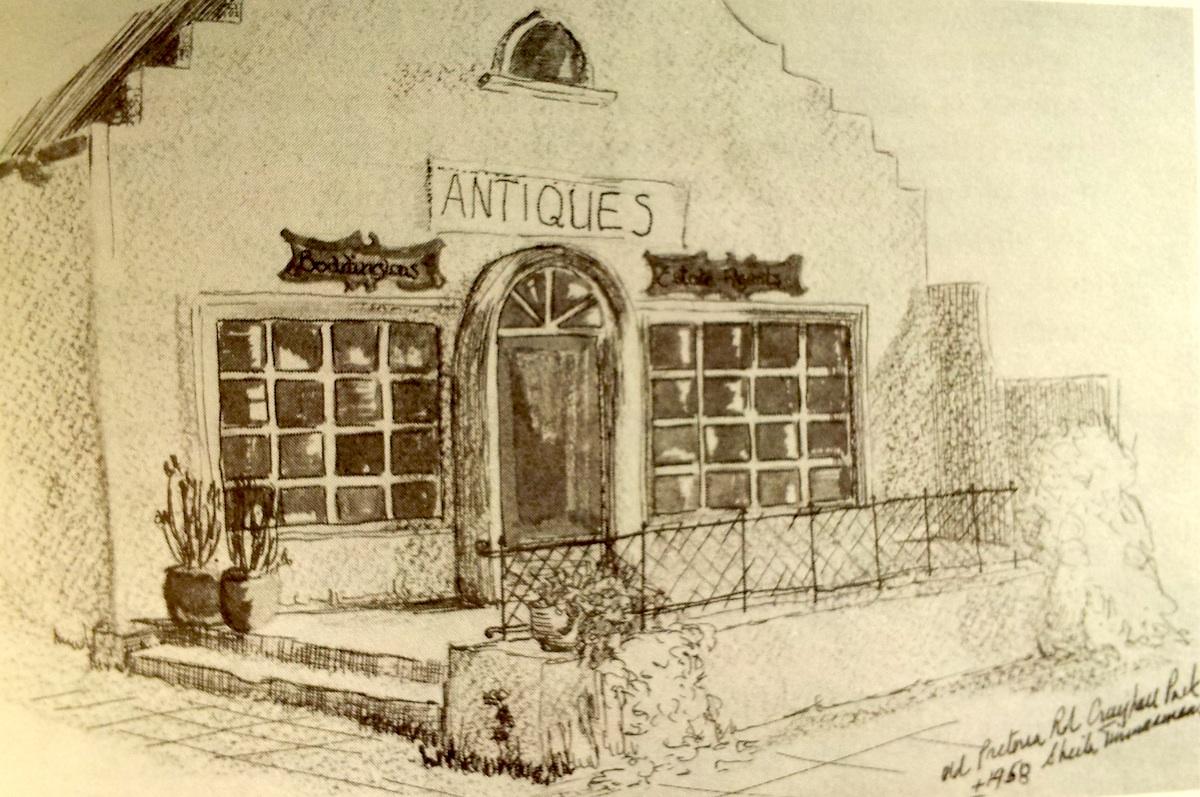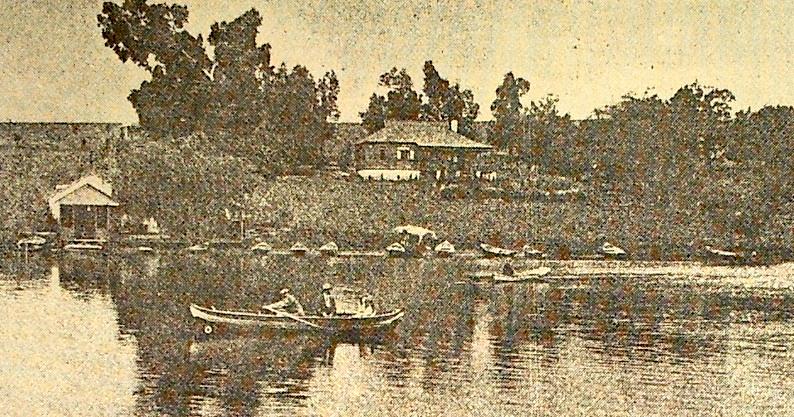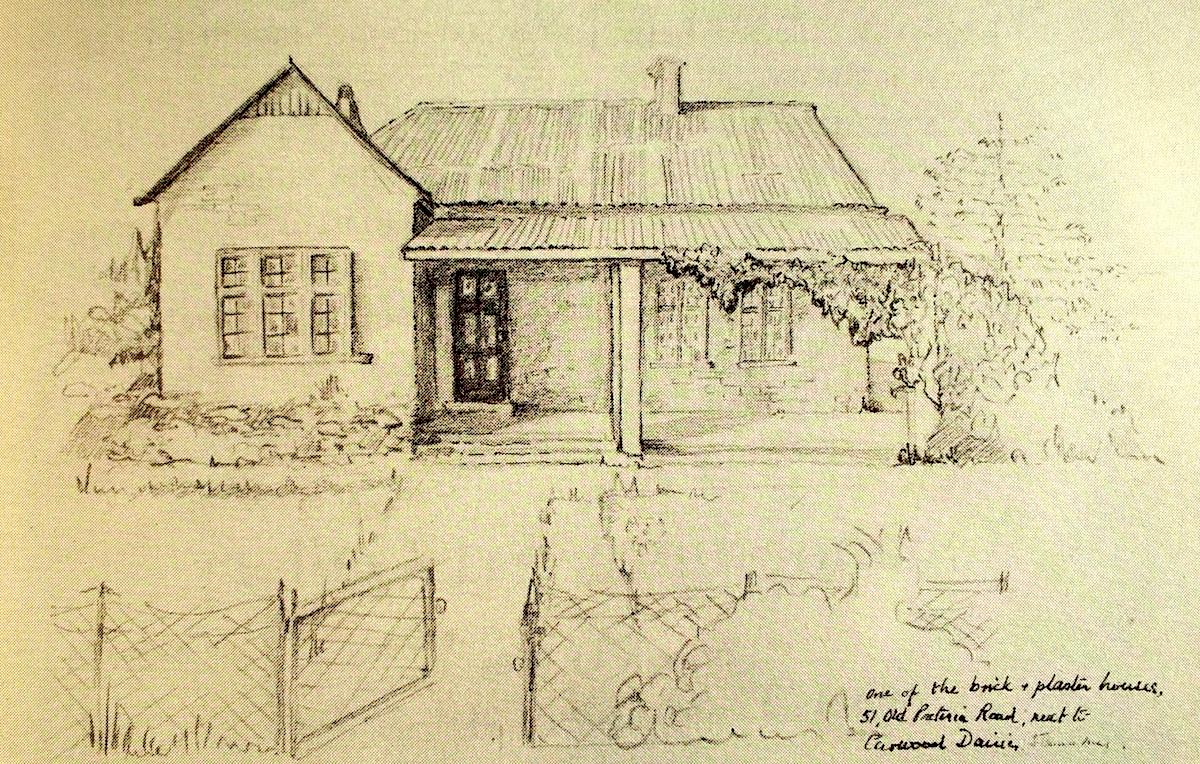
Disclaimer: Any views expressed by individuals and organisations are their own and do not in any way represent the views of The Heritage Portal. If you find any mistakes or historical inaccuracies, please contact the editor.
Craighall is a popular, and some would argue trendy, suburb to the north of Johannesburg. It is hard to imagine that it was once the scene of dusty roads, dairies and a famous lake and hotel. In 1987 Sheila Timmermans compiled a short history of Craighall (and Craighall Park) which was published in the Johannesburg Historical Foundation's Journal Between the Chains. The article contains some fascinating insights into the forgotten spaces and places of the suburb.
Craighall Park in the year 1919, whilst only 10 kilometres from Johannesburg’s centre was a good day’s journey from town, by horse and cart, which was then a common form of transport. They often got bogged down in sandy and deeply rutted roads, which in many cases were private tracks belonging to farms and smallholdings. As each farm was reached, gates had to be opened and closed, causing more delays on the journey. Some of these gates were around Dunkeld, and even today a good example of the old private properties is to be found nearby in Craighall Park where one road changes its name three times. At one time there were gates between Norfolk and Cambridge Avenues, and another one separated Cambridge Avenue from Grosvenor Avenue. New visitors to the suburb frequently got lost because of these changed names.
The origins of Craighall’s street names are rather vague. It is assumed that Talbragar has Australian connections, Waterfall is called after the nearby waterfall, and Alexandra, after the wife of Kind Edward VII, Queen Alexandra.
Old Pretoria Road, Craighall Park circa 1958 (Sheila Timmermans)
Street names in Craighall Park are mainly called after the British Dukes, as in Bedford, Clarence and Lancaster Avenues, etc., but some roads have a more local flavor, as verified by Mr J Liackman, a long time resident. Kruger Drive was named after Mr S Kruger who had a boot factory in the road behind the hotel. In Chandler Drive, there was a brewery which used the hotel as an outlet for its rather flat tasting beer, with the demand diminishing as Castle Breweries took over the market. Burnside Avenue, is not called after a Scottish town, which is the popular belief, but after the little ‘burn’ that runs alongside the Avenue, feeding into the Braamfontein Spruit.
The Braamfontein Spruit was once a popular place for picnickers, as it had a 50 acre stretch of clear lake water, where fat shiny carp jumped about, hoping to be caught by one of the many anglers, who snoozed by the water’s edge, or fished from hired boats. There were plenty of shady nooks, large patches of soft green grass, and an abundance of miniature waterfalls.
Quite a number of people who lived in town would plan a day’s outing to Craighall’s well-known Braamfontein Lake, which would probably include a stop over for lunch, or a whole weekend at the Craighall Hotel. The hotel management organised trips for its patrons in its six passenger, one horse trap to the lakeside where the hotel had an annexe. This was an old Victorian styled house, built of wood and iron, with a wooden railed verandah surrounding all four sides. Afternoon teas were served here, and a good bottle of wine could be had for about 15 cents. The event was made even more enjoyable by listening to popular music played by military bands.
Craighall Lake (Like it Was - The Star)
The original Craighall Hotel was set much farther back than today’s well-known Hyde Park or Colony Hotel [now the Colony Centre]. It was previously in the vicinity of Westminster Drive and Cambridge Avenue, in fact Westminster Drive was the hotel’s main entrance, bordered on one side by a well-stocked orchard, protected by a thick thorn hedge!
A rather attractive building in Craighall Park was that of Innis Hall. Mr Innis, who was a miner, used all his pension money to have a Dutch gabled structure erected on the corner of the Old Pretoria Road and Abercorn Avenue. It was used as a dance hall and hired out for wedding receptions and parties, and much fun and many fights were had there, before it became an antique shop and subsequently disappeared.
Another piece of history which has done the disappearing act, is that of the old British Blockhouse, where, in later years, young boys used to play. It was a square shaped building where the children found belts, bullets and badges, and knew it had been a British stronghold from all the names which had been carved into its rafters. There must have been a good many deaths because nearby were graves with headstones made from four gallon petrol tins, all of which were removed when Mr Sam Kruger decided to develop more of his land.\
Craighall had avenues of pine trees which have mostly been removed, but some of the original gums have been left. Recently a friend and myself measured some of these gums, and to our surprise found they were over six metres in circumference. The one lot of ‘owners’ refused to have the one tree removed, because every year the Craighall owls return to nest there, and the ‘possessors’ of the other tree bought their house because of the tree in the garden, which they say must be about 100 years old.
One of the old brick and plaster houses, 51 Old Pretoria Road, next to Carwood Dairies (Sheila Timmermans)
There were two well-established dairies in Craighall, one at the top of Waterfall Avenue and at the corner of the Old Pretoria Road (now Jan Smuts Avenue) with some brick and plaster houses nearby, and the other down by the Spruit. Its cows used to wander all over the grassy riverbanks, and years after the lake had silted up huge tasty mushrooms could be picked here.
At one stage Craighall and Craighall Park had their own bus service, operated with four horses and driven by a man called Klaas as far as Parktown North. Later the service improved considerably by having a bus which stopped off at most houses in the morning to pick up its passengers, on the understanding that they would get out and walk when the bus reached a steep hill, and lend a hand in pushing when the road was muddy and the bus couldn’t make it on its own. This service only went as far as the Zoo where passengers waited to complete their journey to town.
The suburb’s first Post Office was at the corner of Buckingham Avenue and the Old Pretoria Road. This was incorporated in the general store, and looked like a Wild West building. A rider could step right onto the verandah from his horse and stride inside. Miss Julia Liackman received between £3 and £5 per month for her work there as the Postmistress.
Today’s residents of Craighall and Craighall Park think that their suburb is getting too overcrowded and busy. Imagine if the original plan had been carried out, which was to have a rail system from Pretoria to Johannesburg going right through the region which would have enabled the centre of Johannesburg to be reached in 12 minutes.
Comments will load below. If for any reason none appear click here for some troubleshooting tips. If you would like to post a comment and need instructions click here.



